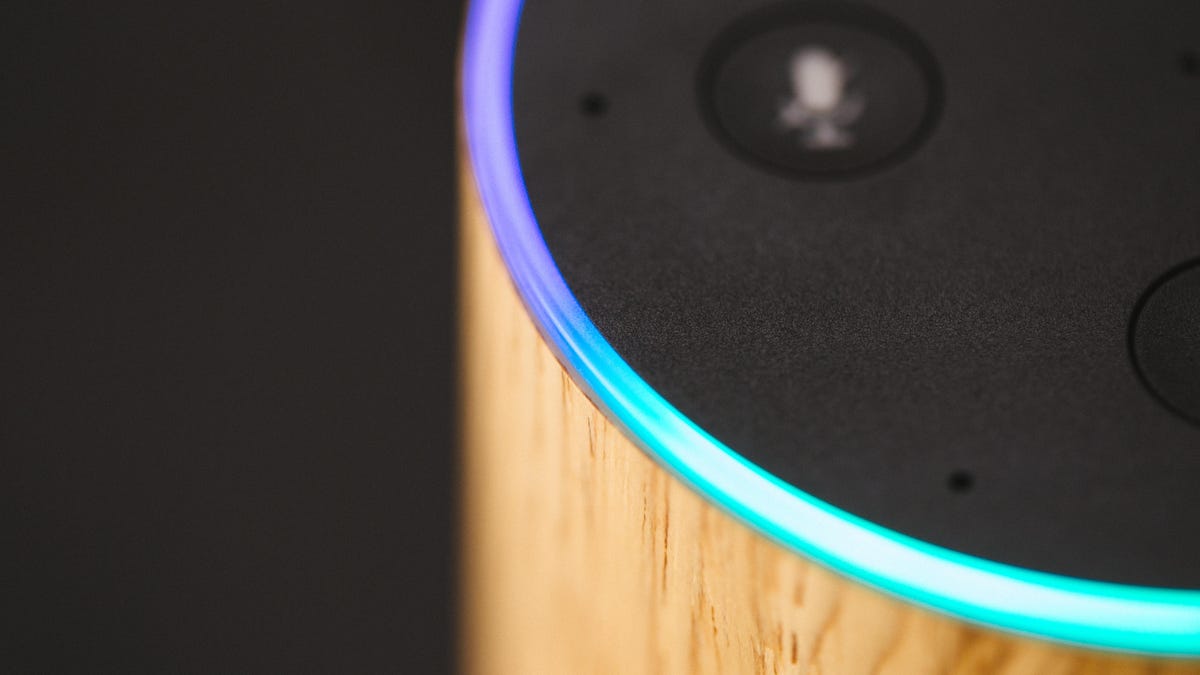 Why You Can Trust CNET
Why You Can Trust CNET Enable Alexa notifications to know when your pizza is on the way
Alexa can send notifications when your Amazon order or Domino's pizza order goes out for delivery. Here's how.

Last year, Amazon added the ability for Alexa speakers to show unobtrusive notifications. Instead of only responding to user requests, Alexa speakers can now notify you -- via the light ring -- of certain events, like a package going out for delivery.
Originally, notifications were limited to Amazon package shipping updates and reminders but have since been updated to include support for third-party skills. (See our list of the most useful third-party Alexa skills here.) Here's how notifications on Alexa will work and how to enable them.
How Alexa notifications work
Aside from controlling your home or streaming music and podcasts, smart speakers specialize in giving you information -- answering questions, providing traffic or weather updates and connecting you to third-party services via what Amazon calls skills. The next logical step is to allow those skills to push the pertinent information to those who choose to receive it.
Notifications are signaled by a chime and a pulsing yellow light on the light ring. Notifications on Alexa devices with screens, such as the Echo Show and Echo Spot , will display in the notifications banner and in the Notifications card (which can be toggled in settings under Home & Clock). To interact with Alexa notifications say the following.
- Check notifications: "Alexa, what are my notifications?" or, "Alexa, what did I miss?"
- Navigate through notifications: "Alexa, next" or, "Alexa, previous."
- Delete notifications: "Alexa, delete all of my notifications."
If you're worried this is just another way for companies to deliver ads, fear not. Amazon last year banned ads from third-party skills, though you may still hear the occasional ad when streaming music or in your Flash Briefing.
How to enable notifications
While notifications sound like they could be a free-for-all on a smart speaker, Amazon made the smart call to make notifications an opt-in process on a per-skill basis. That means you will have to manually opt in to notifications for each and every skill you want to deliver notifications to your Alexa speakers.
To opt in to notifications:
- Open the Alexa app on Android or iOS or go to alexa.amazon.com in a browser.
- Expand the side menu by tapping the hamburger button in the top left.
- Select Settings.
- Under Accounts, select Notifications.
- Select one of the options under Skills.
- Click the toggle to the right of Alexa Notifications to switch it to On.
Notifications for Alexa's own services, Reminders and Shopping Notifications come with different options. You can't turn off reminder notifications, but you can have Alexa send a push notification to your phone when the reminder is delivered. And for shopping notifications, you can toggle delivery and reorder notifications and choose whether Alexa uses product names in those notifications.
Optionally, you can enable notifications from the landing page for a skill in the Alexa app. Open Alexa and go to Skills. Search for Domino's (or the name of another skill once it's updated with notifications) and tap Settings. Then tap Manage Permissions and give or revoke notification privileges there.
Skills with notifications
Originally, Amazon restricted notifications to its own services -- reminders and shopping notifications. However, in the second half of 2017, it started allowing third-party skills to deliver notifications to users. Here's how some of the more notable skills can notify you of the things you want to know about.
- AccuWeather and Big Sky, a hyperlocal weather skill based on the popular Dark Sky API, can notify you when there's severe weather headed your way.
- Kayak can send you notifications on flight status. Want to know when a particular flight has landed? Say, "Alexa, notify me when flight 1930 has landed."
- Twitch can notify you when streamers you follow go live. You can manage your Twitch notifications here. Twitch Prime users will also periodically receive notifications of available benefits.
- Domino's will give you the status update of your pizza orders and let you know when they're out for delivery or ready for pick-up.
- The Washington Post and other news skills that would normally exist in your Flash Briefing can deliver breaking news notifications.
Create a Do Not Disturb schedule
It's unlikely -- though not impossible -- that a shipping notification will go off in the middle of the night. If you don't want Alexa notifications to disrupt your sleep, especially when third-party skills are added to the mix, you'll want to create a schedule for Do Not Disturb.
To do this, open the Alexa app on your phone or tablet or go to alexa.amazon.com in a browser. Then:
- Click the hamburger button in the top left to expand the menu.
- Select Settings.
- Under Devices, select one of your Alexa speakers.
- Under Do Not Disturb, select Scheduled.
- Click the toggle beside Scheduled to enable a schedule.
- Click Edit.
- Set a start and end time for Do Not Disturb and click Save Changes.
Now you won't hear an audible chime when new notifications roll in after hours, but you will still see the pulsing yellow light. This will also affect calls and messages, but alarms and timers will still go off, even with Do Not Disturb enabled.
First published July 27, 2017.
Update, May 22, 2018: Added information on third-party skill support for notifications.

